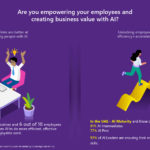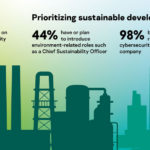Tackling business uncertainty through foresight and scenario modelling

Little in business is certain, but organisations truly have entered into a new age of uncertainty. Resilience in the face of adversity is critical, and a key part of resilience is foresight. Business leaders need the capabilities and systems to look ahead, future-gaze and predict future disruption, helping them to adapt accordingly. Yet how can businesses forecast accurately when everything has changed and old models have been thrown out? Scenario modelling, integrated data and automated business processes in the cloud can help organisations ready themselves for the next obstacle.
Planning for uncertainty
Businesses should make use of every tool in their arsenal. It’s important to distinguish between forecasting, scenario modelling and planning. Forecasting is the act of predicting where your business or the market will be at a point in the future based on relevant historical data. Scenario modelling is when analysts create a range of likely scenarios by looking at possible key turning points. Planning represents the measures and decisions you make based on those insights.
Forecasting and scenario analysis feed the planning process, making them crucial early stages in adapting to disruption. Yet forecasting has become extremely challenging in the current environment. This is where scenario modelling comes into its own. Scenario modelling helps businesses visualise a wide range of possible futures, plan for multiple scenarios and assess how to respond to each one.
Recent experiences suggest the need for a more mature approach to scenario modelling. Despite many organisations actively modelling future scenarios before the crisis, few foresaw or were able to plan for the pandemic. You cannot plan for every outcome, but businesses should start investing into a wider range of possible scenarios going forward.
Platform for resilience
Massive amounts of data concerning customers, employees and competitors can be difficult to manage. Often it will be segmented across an organisation, divided into numerous silos that prevent it from being analysed together. Planning for disruption needs a coordinated response, consultation and collaboration, but it’s difficult to achieve when plagued with silos.
Consolidating forecasting activities in the cloud also instils more confidence in the process as everyone is using the same methods and tools. Cloud applications can be updated to the latest best practices regularly, so processes are always up-to-date for all groups.
Embedded AI apps and solutions can greatly accelerate forecasting and prediction by automating manual data processes. This contributes to agility because people spend less time gathering and verifying data and more time planning for disruption. With the right information sooner, executives and lines of business can make decisions faster and with more confidence.
Foresight is resilience
Modernising with a combined planning and forecasting cloud solution can elevate both scenario modelling and forecasting capabilities, better aligning them with requirements to be more agile and transformative. When a company can anticipate an upcoming trend or challenge, it gains an invaluable head-start on the competition, and the space needed to adapt and capitalise.

Key takeaways
- Resilience in the face of adversity is critical, and a key part of resilience is foresight.
- Scenario modelling, integrated data and automated business processes in the cloud can help organisations.
- Scenario modelling is when analysts create a range of likely scenarios by looking at possible key turning points.
- When a company can anticipate an upcoming trend or challenge, it gains an invaluable head-start on the competition.





